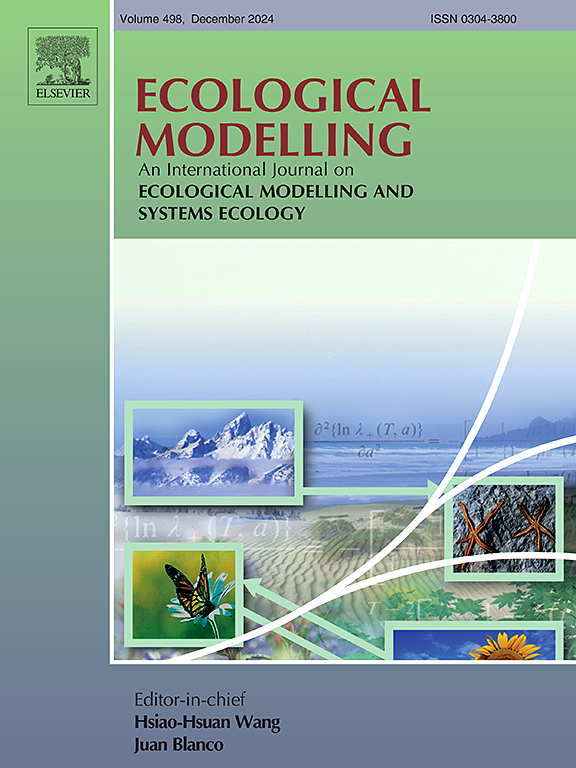Evaluating ecological restoration outcomes in historical mine sites: Landscape connectivity and ecosystem service changes in the Xiang River Basin, China
IF 3.2
3区 环境科学与生态学
Q2 ECOLOGY
引用次数: 0
Abstract
Ecological restoration in degraded mining areas is essential for improving ecosystem functions and promoting sustainable development in resource-dependent regions. However, integrated assessments of restoration outcomes remain limited, particularly in historically disturbed mine sites. These legacy sites often span large areas and face complex ecological challenges, making it critical to evaluate whether restoration efforts have effectively improved ecological structure and function. This study evaluates restoration outcomes at 756 historical mine sites in the Xiang River Basin from 2000 to 2020, focusing on four key ecosystem services: water yield, water purification, soil retention, and carbon sequestration. The evaluation is based on a systematic framework that incorporates three analytical dimensions: landscape pattern evolution, ecosystem service changes, and spatial coupling with key ecological spaces. Our results showed that landscape fragmentation around 84 % of mine sites was significantly reduced, with patch structures becoming more integrated and regular, particularly in areas with dense mine site distributions. Nevertheless, overall landscape connectivity and system stability remained relatively low. In terms of ecosystem services, 52 % of mine sites has experienced a decline in service capacity, with water yield and water purification services in the middle and lower reaches of the basin showing the most notable deterioration. Encouragingly, restoration efforts at several critical ecological nodes have achieved substantial outcomes, demonstrating the potential of precision-based ecological interventions and offering valuable experience for future regional ecological recovery. This study provides empirical evidence and a practical framework for implementing spatially targeted mine restoration strategies in watershed-scale planning.
历史矿区生态修复效果评价:湘江流域景观连通性与生态系统服务变化
退化矿区生态恢复是改善资源依赖型地区生态系统功能、促进可持续发展的重要途径。然而,对恢复结果的综合评估仍然有限,特别是在历史上受到干扰的矿区。这些遗产地通常占地面积大,面临复杂的生态挑战,因此评估修复工作是否有效改善了生态结构和功能至关重要。本研究评估了湘江流域756个历史矿区2000 - 2020年的恢复效果,重点评估了4个关键生态系统服务功能:水量、水净化、土壤保持和碳固存。该评价基于景观格局演化、生态系统服务功能变化和关键生态空间耦合三个分析维度的系统框架。研究结果表明,84%的矿区景观破碎化程度显著降低,斑块结构变得更加完整和规则,特别是在矿区分布密集的地区。然而,整体景观连通性和系统稳定性仍然相对较低。在生态系统服务功能方面,有52%的矿区出现了服务能力下降的情况,其中流域中下游的出水量和净水服务能力下降最为显著。令人鼓舞的是,几个关键生态节点的修复工作取得了实质性成果,展示了精准生态干预的潜力,为未来区域生态恢复提供了宝贵经验。该研究为在流域尺度规划中实施空间定向矿山恢复策略提供了经验依据和实践框架。
本文章由计算机程序翻译,如有差异,请以英文原文为准。
求助全文
约1分钟内获得全文
求助全文
来源期刊

Ecological Modelling
环境科学-生态学
CiteScore
5.60
自引率
6.50%
发文量
259
审稿时长
69 days
期刊介绍:
The journal is concerned with the use of mathematical models and systems analysis for the description of ecological processes and for the sustainable management of resources. Human activity and well-being are dependent on and integrated with the functioning of ecosystems and the services they provide. We aim to understand these basic ecosystem functions using mathematical and conceptual modelling, systems analysis, thermodynamics, computer simulations, and ecological theory. This leads to a preference for process-based models embedded in theory with explicit causative agents as opposed to strictly statistical or correlative descriptions. These modelling methods can be applied to a wide spectrum of issues ranging from basic ecology to human ecology to socio-ecological systems. The journal welcomes research articles, short communications, review articles, letters to the editor, book reviews, and other communications. The journal also supports the activities of the [International Society of Ecological Modelling (ISEM)](http://www.isemna.org/).
 求助内容:
求助内容: 应助结果提醒方式:
应助结果提醒方式:


